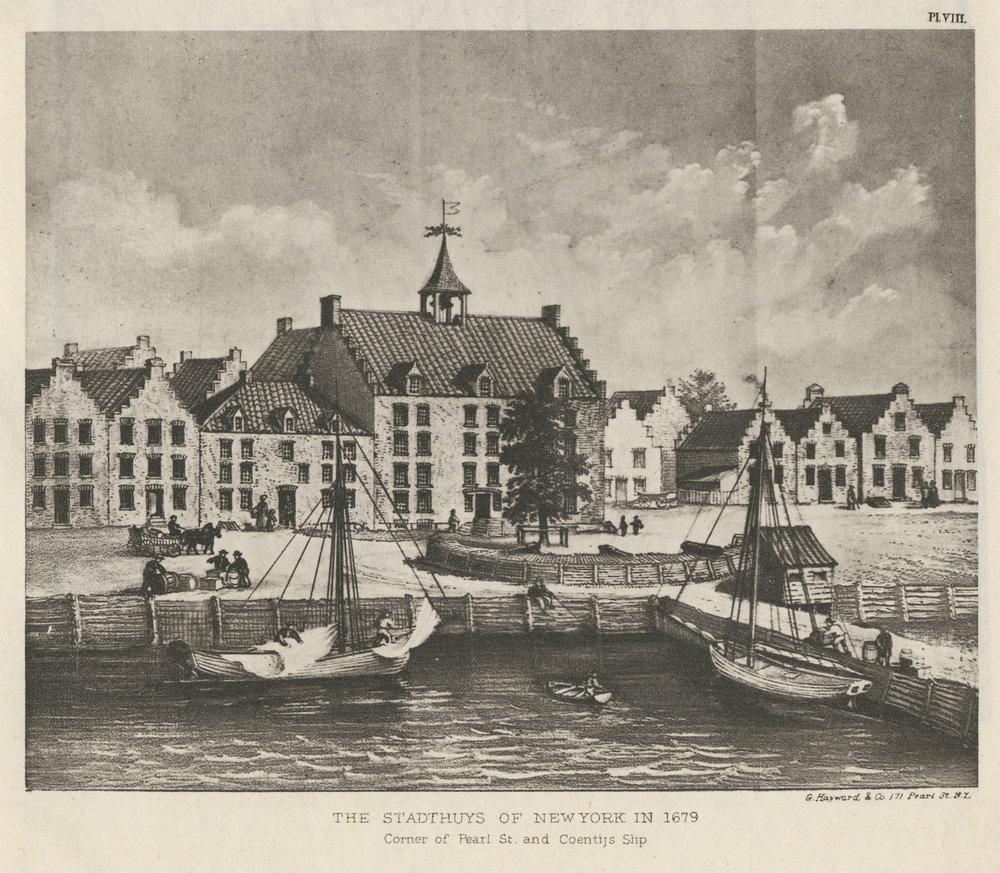The Global / Atlantic Context
To understand the origins of early New York, we must understand the culture that created it. In the seventeenth century, the Netherlands was Europe’s leading commercial power. This was the “Golden Age” of Dutch commerce and culture, when merchants from the Netherlands traded with all parts of the world and Dutch artists like Rembrandt and Vermeer reflected their country’s prosperity.
The Dutch Golden Age emerged during the Netherlands’ long struggle against Spanish rule. The Dutch revolution against Habsburg Spain began in 1566. The Seven Provinces joined together under the Union of Utrecht (1579) and formally declared their independence with the Act of Abjuration in 1581. The new, united Dutch republic fought the Eighty Years War to secure its independence which was finally achieved and recognized by Spain with the Treaty of Westphalia in 1648.
It might be said that the energy unleashed by the drive for independence also powered the remarkable economic , political, and cultural expansion experienced in the Netherlands. In many ways, the rise of Amsterdam as the preeminent European entrepôt symbolized Dutch expansion as Dutch merchants first controlled the rich trades of Europe, then expanded into the East and West Indies. The creation of the United East India Company (Verenigde Oostindische Compagnie – VOC) in 1601 and the West India Company (Geoctroyeerde Westindische Compagnie – WIC) in 1621 were efforts by the States General of the Dutch Republic to bring both order and control over the lucrative Indies trade.
The economic successes of the Dutch Golden Age produced many rivals, chief among them was England, another emerging power in the seventeenth-century Atlantic world. Competition between these two countries invariably led to war; three separate Anglo-Dutch Wars were fought between 1652 and 1674. By the 1670s, external pressure from England and France, combined with internal pressure from Dutch Orangists, led to the collapse of the Dutch government and WIC bankruptcy.
New York’s formative years were a product of the Dutch Golden Age. Although their experience in New Netherland and New Amsterdam represented only a small part of their global interests, the Dutch world view and attitude toward commerce served as the foundation for what would become one of the leading cities of the world.

New Netherland/New Amsterdam to New York/New York City
The year of Henry Hudson’s voyage of exploration – 1609 – also marked the beginning of a Twelve Years Truce between Spain and the Dutch Republic. In this brief period of peace, Dutch investors energetically participated in trade for furs and other commodities in “New Netherland,” an area stretching from the South (Delaware) River, to the North (Hudson) River, to the Fresh (Connecticut) River. After several years of private investment activity, the States General (the governing body of the Netherlands) created the West India Company (WIC) in 1621, a state-sponsored monopoly that limited private entrepreneurship and held broad powers over a wide geographic area that included possessions in North and South America, and the West Indies. In what would become the colony of New York, the WIC maintained two important trading centers: at Fort Orange / Beverwijck (now Albany), and at New Amsterdam (now New York City). The company experimented with various methods to encourage settlement (the “patroonship” plan is the most famous) and turn a profit, but decided in 1639 that the best way to encourage trade and growth in New Netherland was to give up its monopoly on the fur trade. Once again, Dutch private investors speculated on New Netherland trade, many of them employing local residents as their “factors” to help exchange Dutch manufactured goods for New Netherland furs and Chesapeake tobacco. At the same time, a lively trade in foodstuffs and slaves developed between New Amsterdam and the West Indies. Spurred on by expanding local trade, a newly formed, indigenous merchant community in Manhattan pressured the States General of the Netherlands for a municipal government like those which existed in “Patria” (the Fatherland). The new Court of Burgomasters and Schepens, the governing body of the chartered city of New Amsterdam (1653) provided the necessary order and stability to support the continued growth of international commerce. By the late 1650s, New Amsterdam experienced a commercial and population boom.
At the time four English warships arrived in New Amsterdam’s harbor in 1664, the city was a vibrant hub of Atlantic and regional commerce. The so-called English conquest in 1664 did little to change local government or the commerce on which the New Amsterdam, now New York City, was based. Those changes would come later.
We hope you’ve enjoyed our articles and information. If you would like to contribute to help us promote and spread the history of the early New York, please click and discover more about our programs, what we offer and ways you can help.
To be a sponsor and learn of more opportunities of contributing to preserving the history of New Amsterdam email us at:




